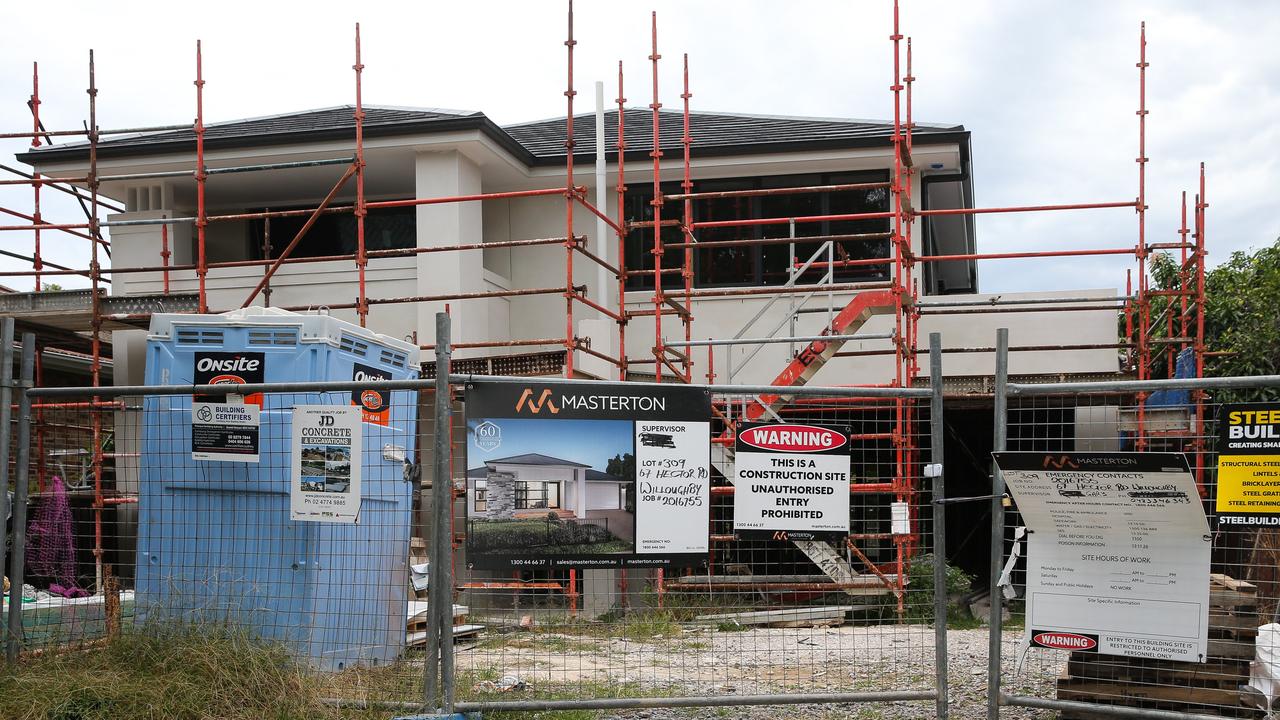Commonwealth Bank expects up to two interest rate rises this year - and will pass them on
COMMONWEALTH Bank expects one or two interest rate rises in the next six months - and will pass them on to customers.

THE Commonwealth Bank expects one or two rises to the official overnight cash interest rate in the next six months - and will pass them on to customers.
Asked what impact this would have on CBA's customers, chief executive Ralph Norris said he expected any rate rises would be passed on to CBA borrowers.
"We would look at the situation as and when increases come through in the OCR, but certainly at this point we would expect in the normal course of events that would be passed through,'' he said.
Mr Norris also commented on the federal Budget, saying "the bark was probably worse than the bite''.
"Nevertheless, the trajectory of the budget is very much in the right direction,'' he said after posting CBA's March quarter unaudited cash earnings of $1.7 billion.
The government's fiscal policy was complementary with the Reserve Bank's contractionary monetary policy, which was appropriate given inflation was rising in the near to medium term, he said.
"Overall it was a reasonable budget,'' Mr Norris said.
The bank's third quarter cash earnings of $1.7 billion came amind what Mr Norris earlier described as "subdued'' credit demand and "fragile'' economic confidence.
CBA today reported its cash profit for the three months to March 31, saying its net interest margin improved on the previous quarter following asset repricing in the first half of 2010-11 as funding costs remained high.
CBA's total bad debts expense was about $300 million during the March quarter, representing about 24 basis points of total average loans, the bank said.
But economic uncertainty led the bank to retain economic overlays of $1.2 billion in bad debt provisions.
Mr Norris, said operating conditions remained challenging, and while the Australian economy continued to perform well, consumer and business confidence remained "fragile''.
This had subdued spending patterns and muted system credit growth.
The fallout from the global financial crisis was weighing on the pace and direction of the global economic recovery, Mr Norris said.
CBA performed well with key trends remaining broadly consistent with those set in the first half of 2010/11, he said.
"Whilst system credit growth remains relatively subdued, business credit showed signs of improvement in the quarter," MR Norris said.
"We continue to expect a gradual improvement in operating conditions through calendar 2011, as the economic recovery strengthens and system credit growth rebounds.''
Banks were facing tougher regulation globally over capital and liquidity, and while the shape and direction of these changes were becoming clearer, Mr Norris said uncertainty remained.
This meant CBA had retained conservative business settings, with capital, provisioning, funding and liquidity levels remaining strong, he said.
CBA is Australia's largest lender and the biggest lender to retail customers.
CBA's retail banking NIM improved during the March quarter following re-pricing of loans in the first half, but the bank said the NIM remained below pre-financial crisis levels.
"Consumer credit quality remains strong, notwithstanding a modest uptick in home loan arrears rates,'' the bank said.
The rise in mortgage arrears was also experienced by ANZ Banking Group and Westpac Banking Corporation, both of which reported half year results last week.
CBA said its wholly-owned subsidiary, BankWest, increased customer numbers over the March quarter, with above-system growth in home lending, and improved new business lending quality.
Like National Australia Bank, which also reported first half fiscal 2011 earnings last week, CBA said the March quarter showed "tentative'' signs of an improvement in system credit growth for business lending.
Demand for credit in the small to medium enterprise sector also showed signs of improvement, CBA said.
Although business conditions remain mixed, CBA expects "an improvement in general corporate demand emerging through the remainder of calendar 2011''.
CBA's business lending grew "well ahead'' of system credit growth in the March quarter, with "good'' growth for its institutional banking and markets division and margins "holding up''.
CBA's wealth management and insurance experienced flat volume growth during the March quarter, with funds under administration firming by 0.2 per cent.
Insurance inforce premiums grew 1.1 per cent from solid growth in the bank's Retail Life business.
The natural disasters in early 2011 caused insurance operating margins to deteriorate, but the impact is not material to group profits, CBA said.
Christchurch's recent earthquake will delay New Zealand's economic recovery, which had started to pick up prior to the disaster, the bank said.
Lower interest rates, high commodity prices and reconstruction activity would boost economic growth over the long term, CBA said.
CBA's New Zealand subsidiary, ASB Bank, had good income growth and continued cost discipline during the March quarter.
Margins at ASB Bank improved from asset re-pricing, despite price competition for retail deposits, the bank said.
CBA's shares were up 21 cents, or 0.4 per cent, at $52.41 by 11.48am.



